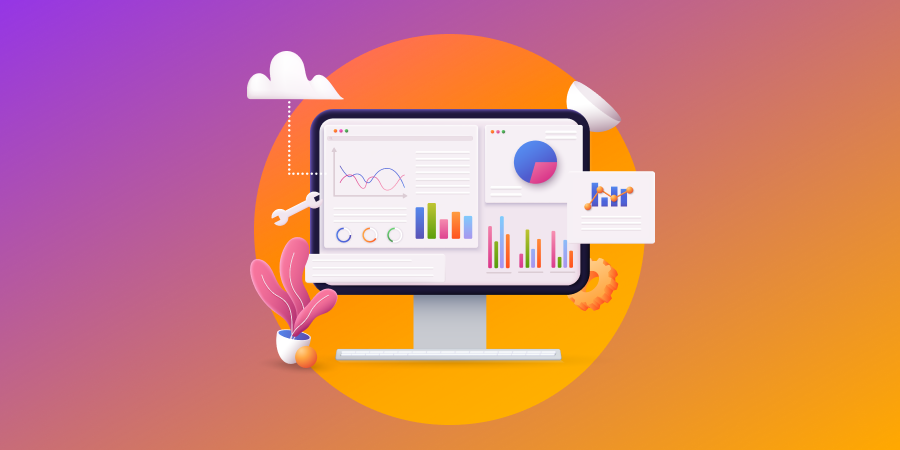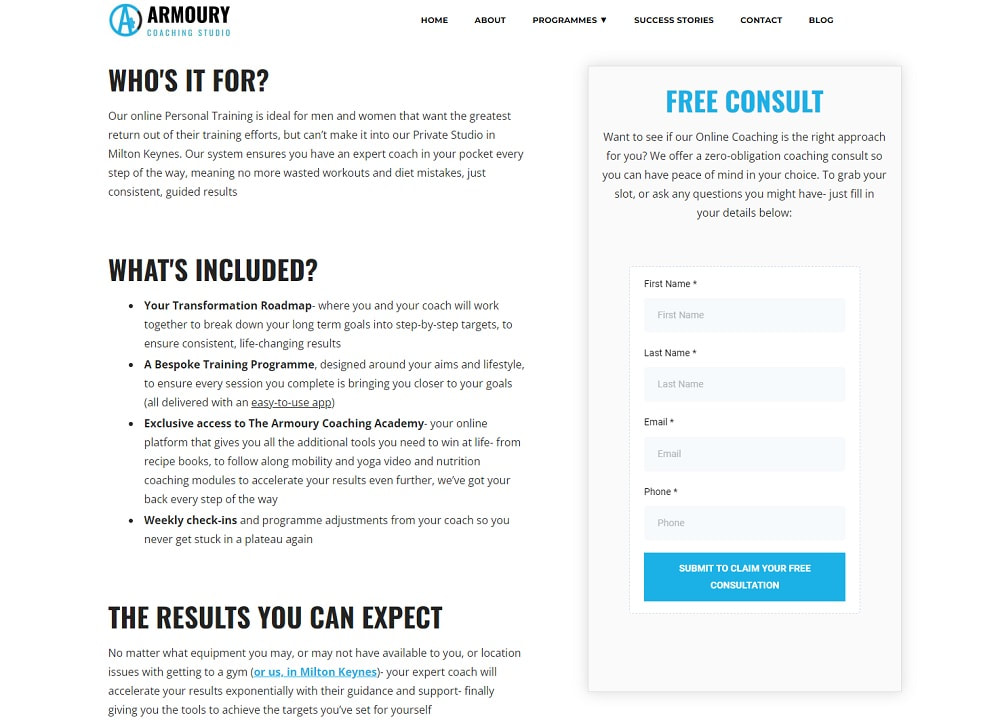Unlock the secrets to optimizing your landing pages for maximum SEO impact and watch your engagement and conversions soar!

Image courtesy of via DALL-E 3
Table of Contents
Welcome to the world of SEO-friendly landing pages! Have you ever wondered how websites attract more visitors and make them stay longer? Well, that’s where SEO comes into play. Let’s dive in and explore how creating SEO-friendly landing pages can boost engagement and conversions.
What is an SEO-Friendly Landing Page?
First things first, let’s talk about what a landing page is. A landing page is a webpage specifically designed to encourage visitors to take a specific action, like signing up for a newsletter or making a purchase. Now, when we say it’s SEO-friendly, we mean that it is optimized to attract more visitors from search engines like Google.
Why Are SEO-Friendly Landing Pages Important?
SEO is like a magic wand that helps your website show up higher in search results, bringing more people to visit it. When your landing page is SEO-friendly, it not only ranks higher in searches but also attracts more visitors. More visitors mean more chances of them taking the action you want, like buying a product or subscribing to a service. In simple words, SEO-friendly landing pages help you get noticed and increase your chances of success. Cool, right?
Choosing the Right Keywords
Understanding Keywords
Keywords are specific words or phrases that people type into search engines when looking for information online. They are crucial for SEO because search engines use them to understand the content of a webpage and determine its relevance to a user’s search query. By using the right keywords on your landing page, you can attract more visitors who are interested in what you have to offer.
Using Tools for Keyword Research
There are simple tools available that can help you find popular keywords related to your topic. These tools provide insights into which keywords are frequently searched for and how competitive they are. By conducting keyword research, you can identify the best keywords to target on your landing page to improve your chances of ranking well in search engine results.
Understanding Search Intent
Search intent refers to the reason behind a user’s search query. It is essential to understand what people are really looking for when they use certain keywords to ensure that your landing page delivers relevant information. By aligning your content with the search intent of your target audience, you can increase the likelihood of attracting visitors who are more likely to engage with your page.
Writing Effective Content
When creating a landing page, it’s crucial to write content that is not only engaging for your visitors but also optimized for search engines. Here are some key tips to help you craft effective content that boosts engagement and conversions.
Keep It Simple
One of the most important things to remember when writing content for your landing page is to keep it simple. Use easy words and short sentences that are clear and easy to understand. This not only helps your visitors grasp your message quickly but also improves your search engine optimization (SEO) by making the content more readable.
Make It Interesting
To keep your visitors engaged, make sure your content is interesting and captivates their attention. Tell a story, ask questions, or provide valuable information that makes them want to read more. Engaging content not only keeps visitors on your page longer but also encourages them to take action, such as signing up for a newsletter or making a purchase.
Using Headers and Subheaders
Headers and subheaders are important for organizing your content and making it easier to read. Break up your text into sections with clear headings that guide your visitors through the page. Not only does this improve the user experience, but it also helps search engines understand the structure of your content, ultimately boosting your SEO.
Using Links Wisely
Internal links are links on your website that direct users to other pages on the same site. These links are essential for both visitors and search engines. For visitors, internal links help them navigate through your content easily, finding relevant information without getting lost. Search engines also use internal links to discover and index new pages on your site, helping to improve your website’s visibility in search results.

Image courtesy of www.digitalsilk.com via Google Images
External Links
External links are links that point to other websites from your landing page. Linking to reputable and relevant sites can boost your website’s credibility and authority in the eyes of search engines. Additionally, external links can provide further information to your readers, enriching their experience on your website. However, it’s important to ensure that the websites you link to are trustworthy and add value to your content.
Backlinks
Backlinks are links from other websites that direct users to your site. These links are crucial for your SEO strategy as they signal to search engines that your website is reputable and trustworthy. The more backlinks you have from high-quality websites, the more likely your site will rank higher in search results. Encouraging backlinks through excellent content and building relationships with other website owners can significantly impact your website’s SEO performance.
Images and Media
When creating a landing page, it’s essential to choose the right images that not only complement your content but also captivate your visitors. Eye-catching images can grab attention and make your page more visually appealing. Be sure to select images that are relevant to your topic and convey the message you want to get across.
Using Alt Text
Alt text, short for alternative text, is a description added to an image that appears when the image cannot be displayed. This text is crucial for accessibility as it helps visually impaired users understand the content of the image through screen readers. Additionally, search engines use alt text to understand what an image is about, which can improve your SEO.
Adding Videos
Incorporating videos into your landing page can significantly enhance user engagement. Videos are a powerful tool to convey information, showcase products or services, and keep visitors on your page longer. By providing valuable and entertaining video content, you can increase the time users spend on your site, which is a positive signal for search engines.
Page Speed
When you click on a website link, do you like waiting for the page to load? Probably not! Page speed is all about how fast or slow a website loads when you visit it. Let’s find out why speed matters for both you as a visitor and for the website itself.

Image courtesy of www.optimizepress.com via Google Images
Why Speed Matters
Imagine you’re trying to find information for a school project, and the webpage takes forever to load. Frustrating, right? Slow-loading pages can make visitors like you leave the website before even seeing the content. Not only does this hurt the user experience, but it can also affect how search engines like Google rank websites.
Tips for Faster Loading Times
There are simple tricks to make sure a website loads quickly for users. One way is to optimize images by making them smaller in size without losing quality. Another tip is to minimize the use of big, fancy animations that can slow down the page. By keeping things simple and streamlined, websites can load faster and keep visitors happy. Remember, a fast-loading page is a win-win for everyone!
Mobile-Friendliness
In today’s digital age, more and more people are using their smartphones and tablets to browse the internet. Having a website that is mobile-friendly is essential to ensuring that visitors have a positive experience on your site, regardless of the device they are using.
What is Mobile-Friendliness?
Being mobile-friendly means that your website is designed to work well on smaller screens, such as those on smartphones and tablets. This involves having text and images that are easy to read and navigate, buttons that are easy to tap, and overall layout that adjusts to different screen sizes.
Benefits of Mobile Optimization
Optimizing your landing page for mobile devices is crucial for reaching a larger audience. With more people using their phones to search for information and make purchases, having a mobile-friendly site can help you attract and retain visitors, leading to increased engagement and conversions.
Responsive Design
Responsive design is a approach to web design that allows your site to adapt to different screen sizes automatically. This means that your landing page will look great whether it’s viewed on a desktop computer, a smartphone, or a tablet. By using responsive design, you can ensure that your site is mobile-friendly and provides a seamless experience for all visitors.
Analyzing and Improving
One way to ensure your landing page is performing well is by utilizing SEO tools. These tools can give you valuable insights into how your page is ranking on search engines and provide suggestions for improvement. Tools like Google Analytics and SEMrush can help you track important metrics, such as organic traffic, bounce rate, and keyword rankings.

Image courtesy of www.mypersonaltrainerwebsite.com via Google Images
Gathering User Feedback
Another crucial aspect of improving your landing page is gathering user feedback. By asking visitors for their opinions and experiences, you can gain valuable insights into what they find engaging and what could be improved. Consider adding a feedback form or survey on your page to collect this information.
Making Continuous Improvements
It’s essential to remember that creating an SEO-friendly landing page is an ongoing process. Making continuous improvements based on the insights gathered from SEO tools and user feedback is key to maintaining and increasing your page’s effectiveness. Keep testing different elements, such as headlines, images, and calls-to-action, to see what works best for your audience.
Conclusion
In creating SEO-friendly landing pages, you are taking a crucial step towards boosting engagement and conversions on your website. By optimizing your content for both search engines and users, you can enhance your online presence and attract more visitors. Let’s quickly recap the key takeaways from this article.
Key Takeaways
Firstly, understanding what makes a landing page SEO-friendly is essential. By incorporating the right keywords, writing engaging content, using links wisely, optimizing images and media, ensuring fast page speed, and prioritizing mobile-friendliness, you can create a well-rounded landing page that appeals to both search engines and visitors.
Remember the importance of conducting keyword research to identify the most relevant terms for your audience and integrating them seamlessly into your content. By meeting search intent and providing valuable information, you can improve your chances of ranking higher in search results.
Additionally, utilizing internal and external links, as well as backlinks, can enhance your site’s credibility and navigation experience. This, coupled with visually appealing images, alt text, and videos, can capture and maintain your visitors’ interest.
Ensuring your landing page loads quickly and is mobile-friendly is crucial for user satisfaction and SEO performance. Regularly analyzing your page’s performance with SEO tools and gathering user feedback can help you identify areas for improvement and make necessary adjustments over time.
By following these steps and continuously refining your SEO-friendly landing pages, you can optimize your website for maximum engagement and conversions. Remember, creating a seamless and enjoyable user experience should always be at the forefront of your strategy.
Want to turn these SEO insights into real results? Seorocket is an all-in-one AI SEO solution that uses the power of AI to analyze your competition and craft high-ranking content.
Seorocket offers a suite of powerful tools, including a Keyword Researcher to find the most profitable keywords, an AI Writer to generate unique and Google-friendly content, and an Automatic Publisher to schedule and publish your content directly to your website. Plus, you’ll get real-time performance tracking so you can see exactly what’s working and make adjustments as needed.
Stop just reading about SEO – take action with Seorocket and skyrocket your search rankings today. Sign up for a free trial and see the difference Seorocket can make for your website!
FAQs
What is an SEO-Friendly Landing Page?
An SEO-friendly landing page is a webpage that is designed and optimized to attract more visitors from search engines. By using relevant keywords, meta tags, and other SEO strategies, these pages can rank higher in search results, making it easier for people to find them.
How Do I Choose the Right Keywords?
Choosing the right keywords for your landing page involves conducting keyword research to identify terms that are relevant to your content and have high search volume. By understanding search intent and using tools to find popular keywords, you can select the best ones to target for your page.
Why is Page Speed Important?
Page speed is crucial for both user experience and SEO. A fast-loading landing page ensures that visitors don’t get frustrated and leave before engaging with your content. Additionally, search engines like Google prioritize websites that load quickly, so improving your page speed can positively impact your search rankings.







